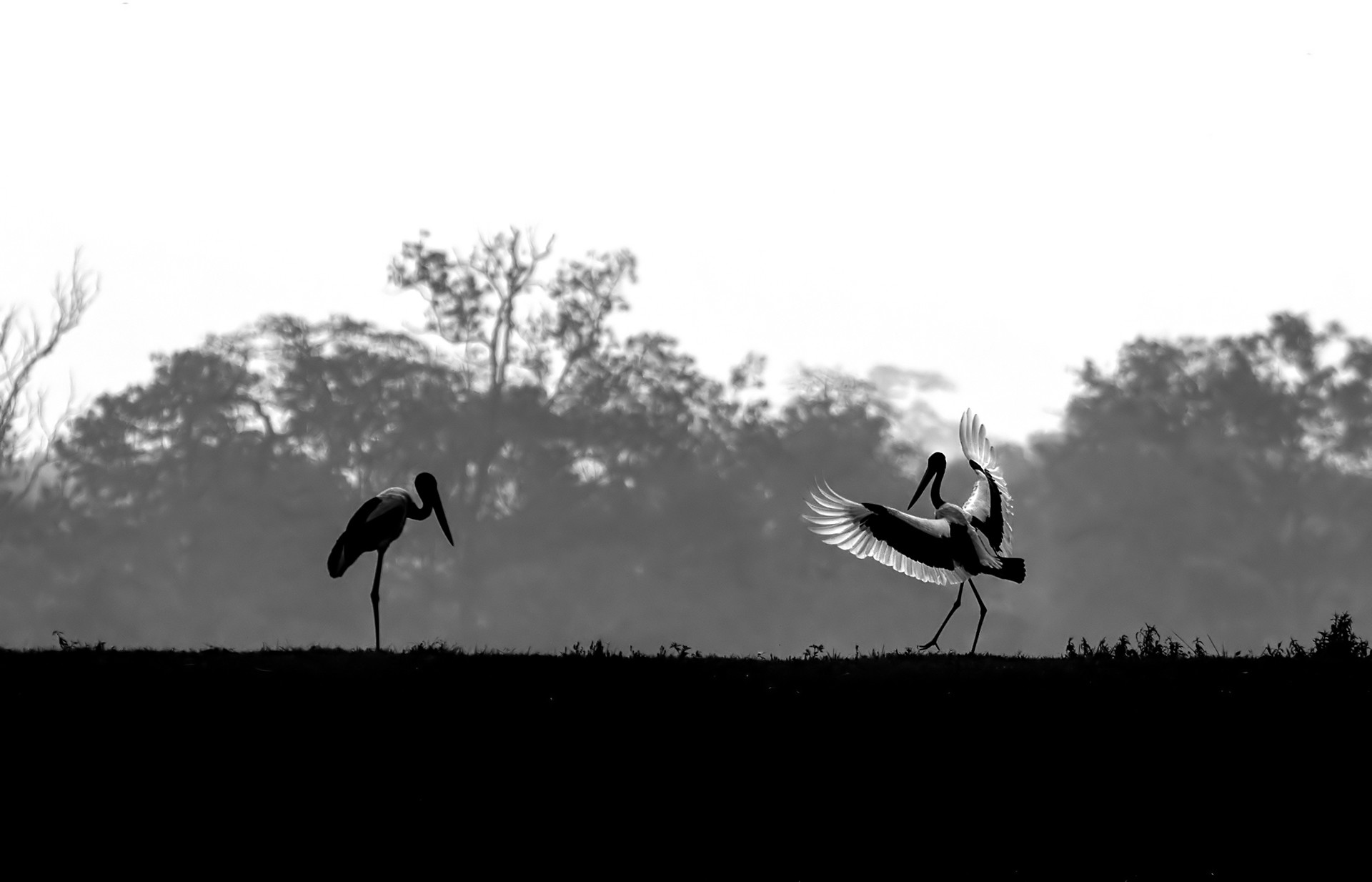 Listen to this article
•
15:34 min
Listen to this article
•
15:34 min
Train travel has always been fun for me, especially when we didn’t have the privilege of streaming movies nonstop on laptops and phones to get rid of boredom. It was a time when a birder, or any nature enthusiast, could look out of the window and try to spot and identify birds. I have memories of seeing black drongos perched on wires, and white-throated kingfishers sitting patiently atop a bamboo half submerged in a village pond. I’ve also seen congregations of egrets flocking alongside cattle, and myriad water birds when my train happened to pass a waterbody.
It was on one memorable train journey long ago that I saw my first black-necked stork, a handsome individual, feeding calmly in an open field. I remember straining my neck to catch a glimpse of it as the train sped away.
The black-neck stork (Ephippiorhynchus asiaticus) is one of the eight species of storks found on the Indian subcontinent. This species of stork, standing almost 130 cm tall, has a wingspan of almost seven feet, and is usually found in or near lowland marshes, rivers, and ponds, as well as in agricultural fields (rice, wheat and inundated fallow fields). They tend to forage singly or in widely separated pairs. They consume a wide repertoire of foods: fishes, frogs, reptiles, turtle eggs, water birds (there is a record of one catching and eating a whole coot). The stork has also been reported to have fed on the Indian flap-shell turtle.

Cover photo: Udayan Borthakur
Allan Octavian Hume, in his book Nests and Eggs of Indian Birds vividly describes the display of the storks: “A pair will gravely stalk up to each other, and when about a yard or two feet apart will stand face to face, extend their long black and white wings, and while they flutter these very rapidly, so that the points of the wings of the one flap against the points of the other’s wings, advance their heads till they nearly meet, and both simultaneously clatter their bills like a couple of watchmen’s rattles.
Sifting through the Internet, I came across an interesting historical anecdote connecting the black-necked stork to a cultural ritual in Bihar. Written by P B Shekar and B Robert Grubh in the periodical Newsletter for Birdwatchers, it mentions how Mirshikar (a group of Muslims who have traditionally been bird hunters) grooms-to-be have to catch a black-necked stork with bare hands before heading off to marry a girl. This practice, however, was stopped in the 1920s when a cornered black-necked stork (called loha sarang locally) gored a potential groom to death.
Interestingly, the nesting success of the black-necked stork depends largely on a successful monsoon. It has been noted that although fledging success (chicks acquiring the feathers necessary for flight and becoming independent) from a single nest is generally one to three birds. However, in years of high rainfall as many as five black-necked storks may fledge.
Black-necked storks are adjudged ‘near threatened’ according to the IUCN Red List. Although that means they aren’t as yet in critical danger, the black-necked stork is imperilled by several threats. Prominent threats include loss of suitable habitats, to the degradation and draining of shallow waterbodies, dumping of waste, overfishing, hunting, and power-line collision. Very recently, birders from Delhi along with the forest department, rescued and successfully released a black-necked stork which had a plastic ring stuck on its bill. A 1995 report by Drs Rathin Barman and Bibhab Kumar Talukdar relates black-necked stork nestlings being collected for feasts during the Bhogali bihu festival in Panidihing Reserve Forest, Sibasagar, Assam.

SPOT THEM: Black-necked stork can be found in Surajpur Bird Sanctuary and Keoladeo Ghana National Park in the north and in Kaziranga National Park and Deepor Beel Wildlife Sanctuary in the Northeast. They are sparse in peninsular and southern India. Outside the Indian subcontinent, they are also found in Southeast Asian countries like Cambodia, Myanmar, and Vietnam, as well as further south in Papua New Guinea and Australia.





